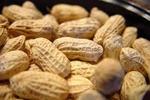Speaking at three-day event in Napa Valley hosted by the Peanut Institute on May 4-6, Dr Richard Mattes, distinguished professor of foods and nutrition at Purdue University, said that it has become an accepted wisdom that eating too many energy-dense foods has contributed to the obesity epidemic.
But when you start to explore the role that some energy dense foods such as nuts play in the diet, the argument starts to break down, said Dr Mattes.
“Energy density is a dangerous concept because it ignores other important properties of foods, including nutrient density, but it’s gaining traction.”
There is not a significant correlation between the energy density of the diet and BMI
Analyses of the eating patterns of lean and obese people do not reveal a big variation in the energy density of their diets, he pointed out. “There is not a significant correlation between the energy density of the diet and BMI.”
Likewise, as obesity rates have risen since 1980, the percentage of fat - the most energy dense macronutrient - in the American diet has gone down, while protein has remained pretty constant, and carbohydrate intakes have increased, he said.
Similarly, soda contributes a significant percentage of calories to the diet, but is not an energy dense product, he said.
Nuts elicit strong dietary compensation
Meanwhile, epidemiological data consistently shows that people eating a diet high in peanuts - which are extremely energy dense with around 600 calories per 100g compared with apples at 47 cals, white bread at 266 cals, and even Krispy Kreme original glazed donuts at 385 cals - have a lower BMI and a reduced risk of cardiovascular disease and diabetes, he said.
Similarly, compliance with weight-loss programs is better when peanuts and peanut butter are included, he said.

“This is not consistent with the energy density hypothesis.”
The satiety value of peanuts seems to stem from the synergy of their components
So what’s going on?
First, nuts suppress hunger, as well as the desire to eat (which are not necessarily the same things - you can still desire dessert when you’re full), he said. And as such, they “elicit strong dietary compensation that offsets two-thirds to three-quarters of the energy they yield”.
So if you eat nuts in the morning, you will spontaneously compensate by reducing your calorie intake later on in the day.
Whether this is because nuts absorb moisture in the GI tract and fill you up, are high in protein and fiber, or for other reasons, is not clear, he said, but the effects do not appear to be due to nuts’ impact on hormones affecting hunger such as CCK, PYY, ghrelin or GLP-1.
“The satiety value of peanuts seems to stem from the synergy of their components.”
Whatever the reason for the satiating effects, he said, “you will typically see spontaneous adjustments of up to three-quarters of energy consumed.”
Calorie content: We don’t absorb all of the energy in nuts

Second, recent research shows we don’t absorb all of the energy in nuts, which means we may be overstating their calorie content, he added.
When you bite into a nut and break it up into smaller pieces, some of these pass through your digestive system intact, taking the energy contained in them with them, he explained. “If you analyze the feces [of people that have eaten nuts] you still see lipid-based energy in there.”
The rigid structure of the nut cell membranes appears to lock in some fat, preventing it from being absorbed in the digestive tract, he said.
The extent of the disparity between the actual and stated calorie content depends on the nut, but almonds appear to be most out of sync, with a likely 20% overstatement of calories in pack, while whole peanuts (but not peanut butter) are around 10-15% out of sync, he said.
I’m not saying you can eat nuts with impunity
Third, some research suggests chronic nut consumption is associated with an increase of resting metabolic rate, he said.
“Combined, these three responses account for nearly all of the energy contained in a moderate portion.”
He added: “I’m not saying you can eat nuts with impunity, but it helps to explain why nut consumption doesn’t make us put on weight.”
The second meal effect: Consuming peanuts at breakfast helps prevent spikes in blood sugar throughout the morning and after lunch
As nuts are low GI (glycemic index) foods, they can also be used to mitigate the effects of high-carb products on blood sugar, he said.
Meanwhile, consuming nuts at breakfast has also been shown to help prevent spikes in blood sugar throughout the morning and even after the next meal of the day.
Our perception of how satiating something will be affects our physiological response to it

Dr Mattes also presented data showing that our perception of how satiating something will be can actually affect our physiological response to it, with hunger ratings after drinking identical cherry-flavored beverages varying according to what subjects are told about the product in advance.
For example, if you tell people that the cherry beverage will turn into a solid or gel in their stomach (and demonstrate by pouring a cherry-colored alginate solution into a calcium chloride solution to form a solid jelly-like mass), they will report lower hunger ratings after consuming it than if they are told it will remain as a liquid.
Meanwhile, subjects believing the beverage will stay liquid in their stomachs also show more rapid gastric-emptying and orocecal transit times, lower release of satiety hormone such as GLP-1 and CCK, and are less likely to compensate for the calories in that beverage by eating less later in the day, he said.
“Everything about the physiological response is altered by your mental expectations.”
(Click here for details - Cassady et al, Am Journal of Clinical Nutrition, 2012, 95; 587-93).
